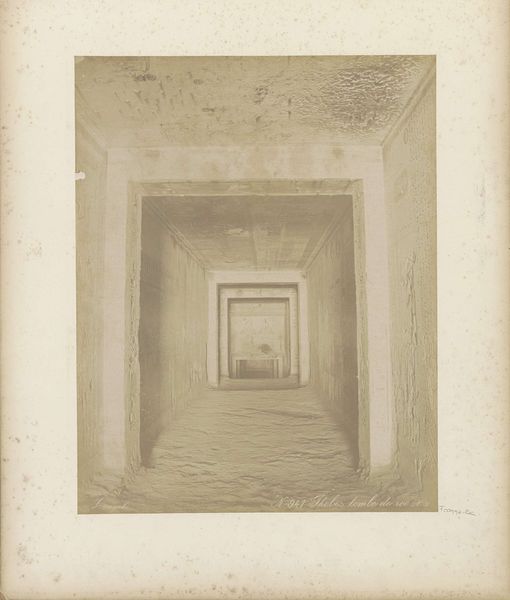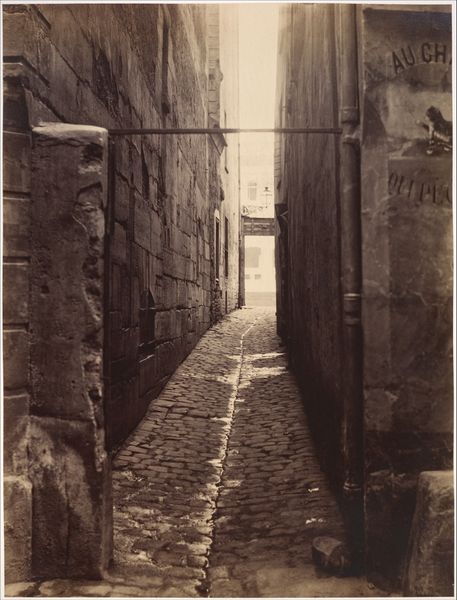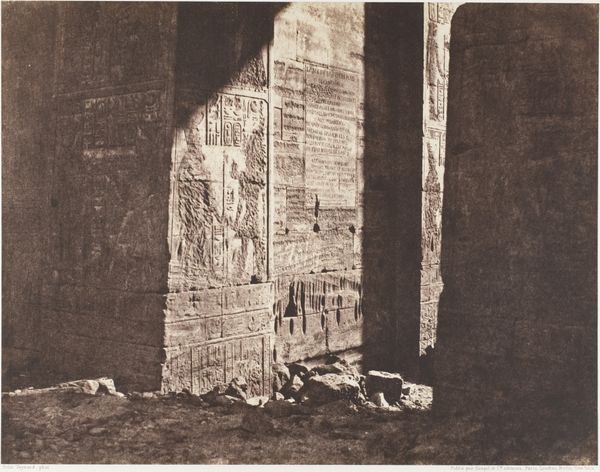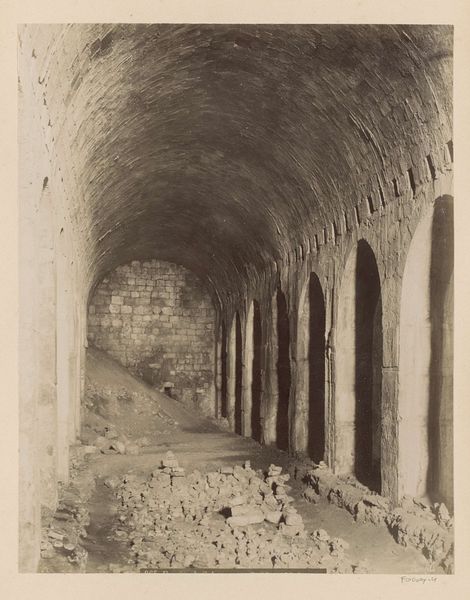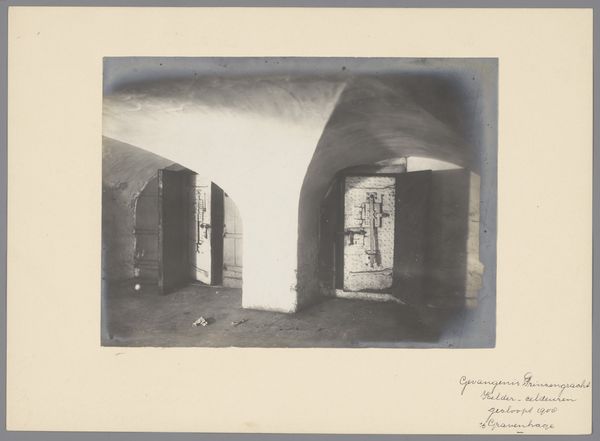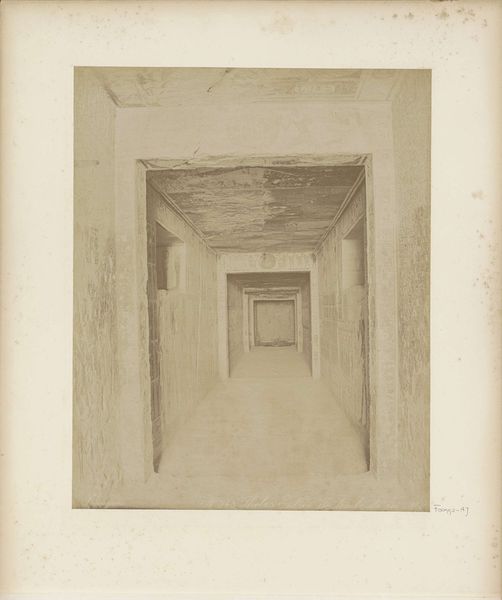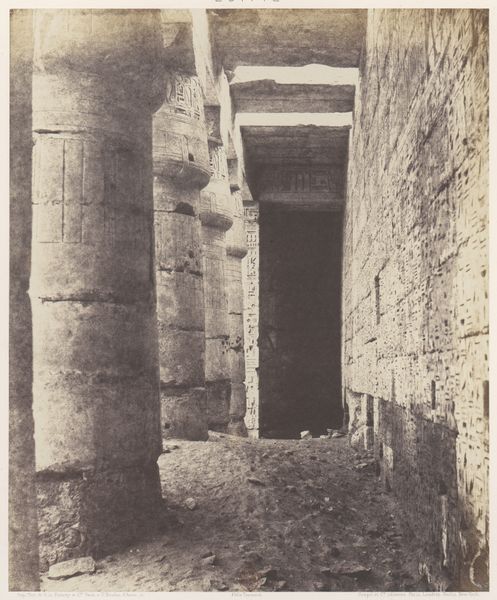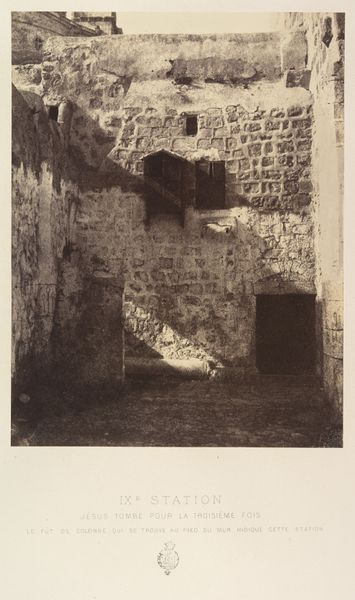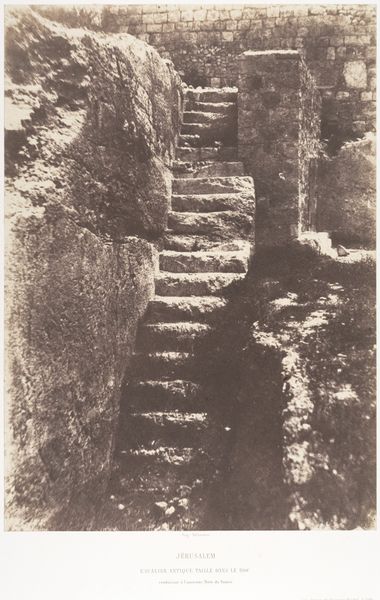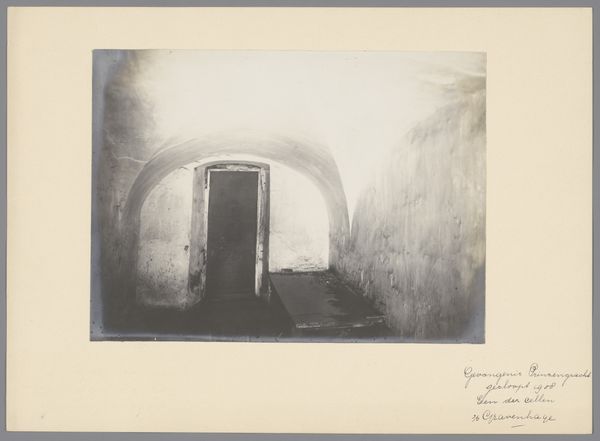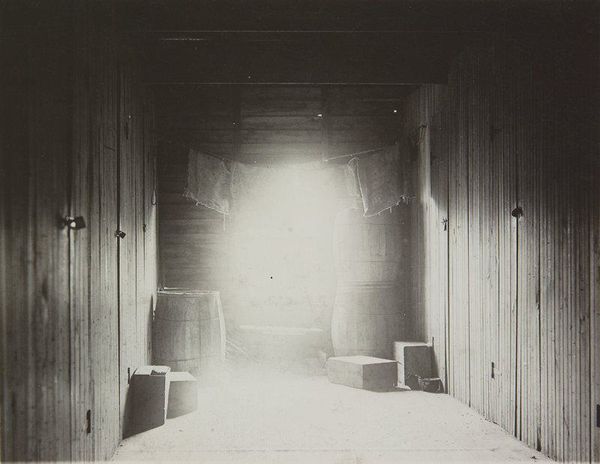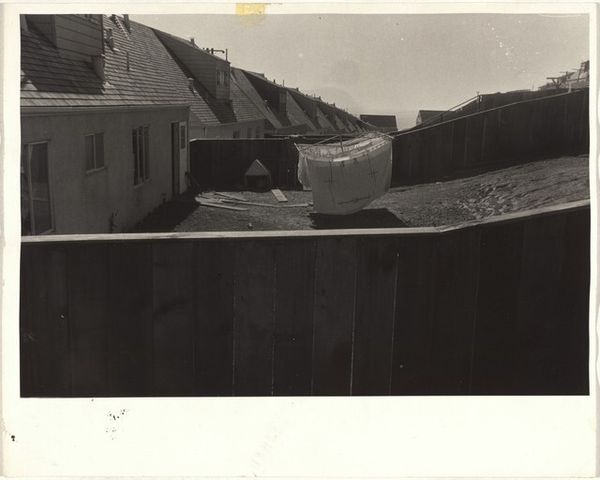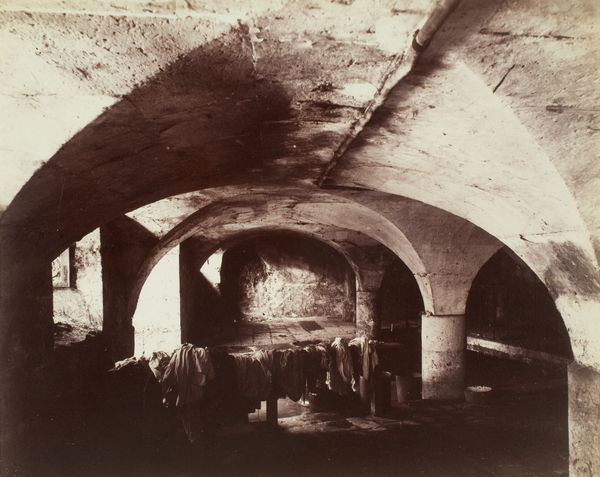
photography, site-specific, gelatin-silver-print
#
film photography
#
landscape
#
ancient-egyptian-art
#
photography
#
geometric
#
ancient-mediterranean
#
site-specific
#
gelatin-silver-print
Dimensions: height 79 mm, width 110 mm
Copyright: Rijks Museum: Open Domain
Editor: Here we have Johannes Lodewijk Heldring’s 1898 photograph, “Temple of the Sphinx in Giza,” a gelatin silver print. I'm immediately struck by how this image seems to flatten and compress so much history into one view, turning architecture into almost a stage set. What do you see in this piece, particularly in terms of its historical significance? Curator: This photograph presents a fascinating document of late 19th-century Egyptomania, a cultural phenomenon where ancient Egyptian art and architecture became deeply fashionable in the West. Heldring's choice to capture this particular perspective – seemingly from within the temple looking outwards towards the Sphinx – suggests an engagement with how European powers were increasingly framing Egypt within their own narratives of exploration and possession. Editor: Possession? Could you elaborate? Curator: Certainly. Photography in the late 19th century became a powerful tool for documenting and thus "claiming" territory, history, and culture. The very act of photographing the Temple of the Sphinx—framing it, capturing it—became a symbolic gesture of ownership and control over Egyptian heritage by Westerners. How do you feel this photograph contributes to the ongoing dialogue about cultural heritage and representation? Editor: I guess it's hard to separate the aesthetic experience from that uncomfortable historical reality. It makes you consider the ethics of seeing and capturing these spaces. It almost feels like a prelude to some great heist! Curator: Exactly! The “grand tour” aesthetic intertwines with political power. This makes us consider the agency inherent not only in creating but also in viewing the image, as a contemporary audience aware of historical injustices. Editor: Thank you; that really reframes my understanding! I will never see photography the same way now! Curator: And, perhaps, that's the real value of viewing such a piece through a historical lens; it encourages critical thinking.
Comments
No comments
Be the first to comment and join the conversation on the ultimate creative platform.
